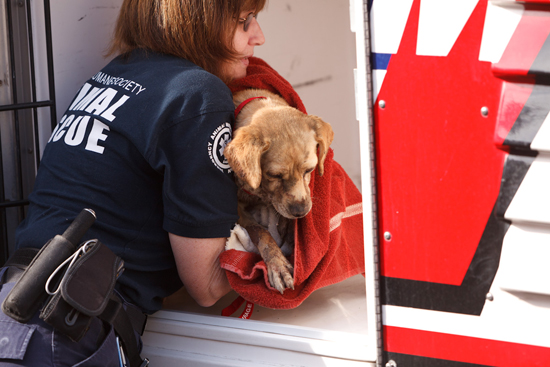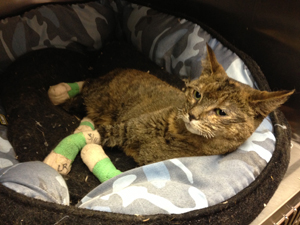
By Phil Riske, managing editor | Rose Law Group Reporter
While amendments to a bill that would separate livestock from other animals under cruelty laws are supported by stakeholders, two similar bills remain opposed by the Arizona Humane Society (AHS).
House Bill 2587 and SB 1267 would drop the option to charge someone with a felony and make the Arizona Department of Agriculture the sole investigator of complaints, which would mean no more involvement from county or local law enforcement agencies. It would also ban counties, cities and towns from enacting an ordinance that is tougher than state law. Under amendments, there can be coordination with other law enforcement organizations.
“The improved amendments to the bill . . . are a step in the right direction, but don’t go far enough,” Bretta Nelson, AHS public relations coordinator, told Rose Law Group Reporter. The legislation reduces penalties for abuse and is filled with ambiguities, she said.
“And while we appreciate the efforts to include hoarding provisions, the language is deficient and unlikely to provide additional meaningful protections. Simply put, we cannot accept a mediocre win for Arizona’s cats and dogs at the expense of Arizona’s horses and cows, Nelson said. “We cannot in good conscience ask our supporters to help us save the lives of thousands of homeless pets each year, while knowingly putting the lives of thousands of other animals at risk. Abuse is abuse. And we cannot accept any lesser penalties for any animal abuse.
Q&A
How does the function of the society differ from SPCA and animal control agencies?
Nelson: The Arizona Humane Society is an open intake shelter, meaning we take in animals regardless of breed, age or medical condition. Limited intake shelters are different in that they focus on what is within their means, healthy adoptable pets. As an open intake shelter, we operate two very unique programs – AHS’ Second Chance Animal Hospital, the largest shelter-based trauma center in the Southwest, and an Emergency Animal Medical Technician (EAMT) program in which our EAMTs are responding to calls of injury, abuse and neglect.

As such, we often see things that are beyond the scope of imagination. While AHS’ ambulance can rescue animals throughout the Valley, our cruelty investigations take place within the cities of Scottsdale and Phoenix. As such, AHS’ EAMTs are often called upon to provide expert testimony in suspected animal abuse/neglect cases for the cities of Scottsdale and Phoenix.
However, AHS is not law enforcement and cannot remove an animal from a home or undesirable situation, but can call on law enforcement to help through the cities’ seizure ordinances.
By law, healthy stray animals must be turned into Maricopa County Animal Care and Control whereas ill and injured stray animals come to AHS. If a Good Samaritan sees an animal hit by a car they would want to call AHS, whereas if they see an animal running at large or have barking or licensing concerns they would want to contact Maricopa County Animal Care and Control, a government-run agency.
On a scale of 1 to 10, how serious is animal abuse in Arizona? Explain.
To AHS, animal abuse is very serious, of course. Arizona does rank 7th in animal welfare laws but there is always room for improvement and an even higher ranking. Arizona also ranks only second in pet overpopulation, second to LA County.
What is the most common form of abuse?
The most common calls that the Arizona Humane Society’s Emergency Animal Medical Technicians (EAMTs) respond to our calls of no water, no shelter and abandonment.
What animals are most often abused? AHS’ cases most directly involve companion animals such as dogs and cats. However, we often respond to hoarding cases which have included rabbits, exotic birds and tortoises.
What are some of the excuses animal owners give for the condition of their animals? For some people it truly is an educational opportunity. For example, not understanding the importance of not walking dogs in the middle of the day in July in Arizona. We often respond to calls of people who have just moved from the Midwest and have no idea of the true dangers of Arizona’s summer heat. We also hear excuses of no money and/or no time.
How many cases do you deal with annually? Our EAMTs responded to nearly 22,000 calls for help last year. These calls comprise both ambulance calls – hit by car, stuck in canal, stuck in tree, etc.- and suspected cases of animal cruelty within the cities of Phoenix and Scottsdale.
How are you funded?
AHS is a non-profit organization that receives no government funding and relies solely on minimal service fees and private donations. AHS has a $16 million operating budget and would not be able to provide the services and programs that we do without the support of the community, our 50,000 donors and our 1,800 volunteers.
How many employees and volunteers?
AHS has 190 staff members and 1,800 volunteers, 550 of whom are foster volunteers who open their hearts and homes to animals as they recover and get ready for the adoption floor.











